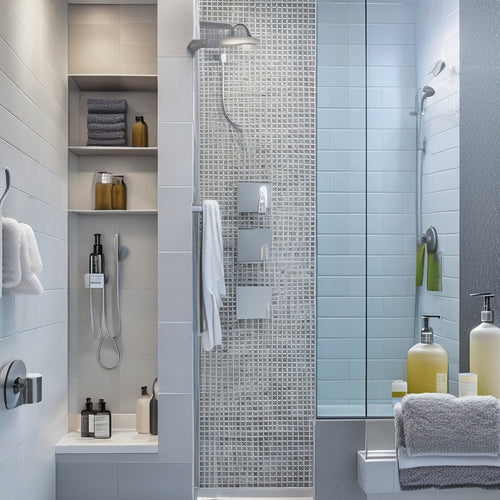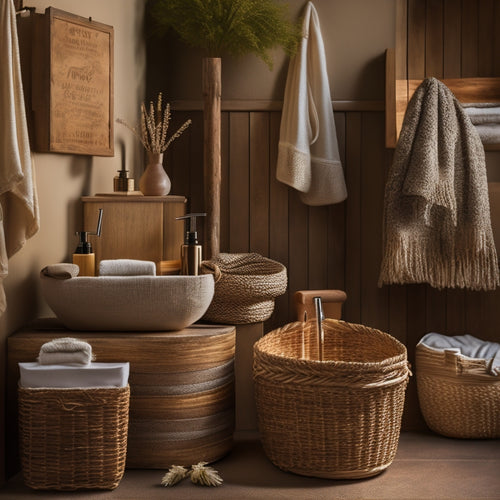
DIY Nightstand: Craft Your PB Kids Look
Share
I'm creating a DIY nightstand that captures the essence of PB Kids' style, and I'm taking you through my process. First, I'm building the base with sturdy legs and a smooth-gliding drawer. Next, I'll construct the top with pocket holes and secure it to the base. With the structure in place, I'll focus on finishing touches like staining and trim options - think reclaimed wood or MDF for a rustic or clean look. I'll also add functional details like soft-close glides and personalized knobs. Now that the foundation is set, it's time to add the perfect blends of style and functionality.
Key Takeaways
• Assemble the nightstand base by attaching legs and shelves securely for a solid foundation.
• Construct the top by drilling pocket holes and attaching top boards together and to the base.
• Choose a staining technique like gel stain or water-based stain to achieve the desired PB Kids look.
• Select trim options like reclaimed wood or MDF trim to add a rustic or clean finish to the nightstand.
• Add soft-close glides and knob or handle options to complete the DIY nightstand with a personalized touch.
Building the Nightstand Base
I begin by cutting four wood pieces to the required length for the nightstand base, making sure to account for the 1x2 legs that will be attached later.
Next, I assemble the drawer, paying close attention to its construction to guarantee a smooth glide.
The legs will be attached using a sturdy leg attachment method, providing a solid foundation for the nightstand.
After that, I'll move on to shelf installation, carefully placing the shelf pieces to create a sturdy and level surface.
With the base taking shape, I'll focus on drawer assembly, making sure it fits seamlessly into the nightstand.
Constructing the Top and Finishing
With the base of my DIY nightstand taking shape, I'm ready to move on to constructing the top, where I'll focus on creating a sturdy and attractive surface that complements the overall design. I'll drill pocket holes in the top boards, glue and attach them together, and then attach the base to the top. Next, I'll attach the drawer face and trim pieces, making sure everything is secure and even.
| Staining Techniques | Trim Options | Drawer Hardware |
|---|---|---|
| Gel stain for a rich finish | Reclaimed wood for a rustic look | Soft-close glides for smooth drawers |
| Water-based stain for a subtle look | MDF trim for a clean finish | Knob or handle options for a personalized touch |
| Distressing for a vintage vibe | Wood veneer trim for a premium feel | Drawer stops for added convenience |
Now it's time to fill any holes with wood putty, sand, and stain the nightstand to bring out its full potential.
Gathering Materials and Tools
You'll need to gather a range of materials and tools to bring your DIY nightstand project to life. When it comes to material selection, I opted for pine 2x2s for the legs and common boards for the rest of the nightstand. I also chose 1/2 plywood for the side panels.
For tool preparation, I set up my equipment, including the Kreg Rip-Cut for cutting plywood and the Rockwell Blade Runner for precise cuts. Proper equipment setup is essential to guarantee accurate cuts and a smooth build process.
With my materials and tools in place, I'm ready to start constructing my DIY nightstand. Remember to take your time during this stage, as it lays the foundation for a successful project.
Frequently Asked Questions
Can I Use MDF Instead of Plywood for Side Panels?
I'd recommend using MDF for side panels, but keep in mind its durability limitations. To guarantee success, properly prepare MDF by sealing it and using the right screws to avoid splitting; it's a great alternative to plywood if done correctly.
What Type of Wood Glue Is Recommended for This Project?
As I wield my trusty medieval-style woodwork hammer, I recommend using a high-strength wood glue, like Titebond III, for this project - it's got excellent clamp time and glue strength, ensuring a rock-solid bond that'll withstand the test of time.
Are There Any Alternatives to Kreg Rip-Cut for Cutting Plywood?
I'm considering alternatives to the Kreg Rip-Cut for cutting plywood, and I've got my eyes on Circular Saw or Jigsaw options - both seem like viable choices, but I'm curious about their precision and ease of use.
How Do I Ensure Precise Measurements for a Perfect Fit?
'Measure twice, cut once' is my motto, but how do I guarantee precise measurements for a perfect fit? I rely on trusty measurement tools and careful calculating to minimize errors, guaranteeing a snug fit every time.
Can I Add Casters to Make the Nightstand Mobile?
"I'm considering adding casters to my nightstand for easy mobility, and I'll choose ones that fit my design style. With casters, I'll enjoy the benefits of effortless rearrangement and increased flexibility in my bedroom layout."
Related Posts
-

Sleek Shower Organizers for Contemporary Homes
Sleek shower organizers are essential for a contemporary home, blending aesthetics with function. By utilizing vertic...
-

Rustic Bathroom Storage Baskets and Bins
Rustic bathroom storage baskets and bins add both charm and practicality to your space. Made from natural materials l...
-

Dartmouth's Diverse Campus Support Networks Unveiled
Dartmouth College offers a wide-reaching network of support systems and resources, fostering an inclusive environment...


